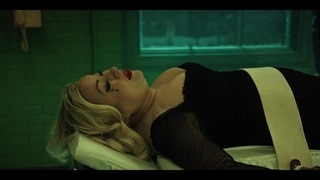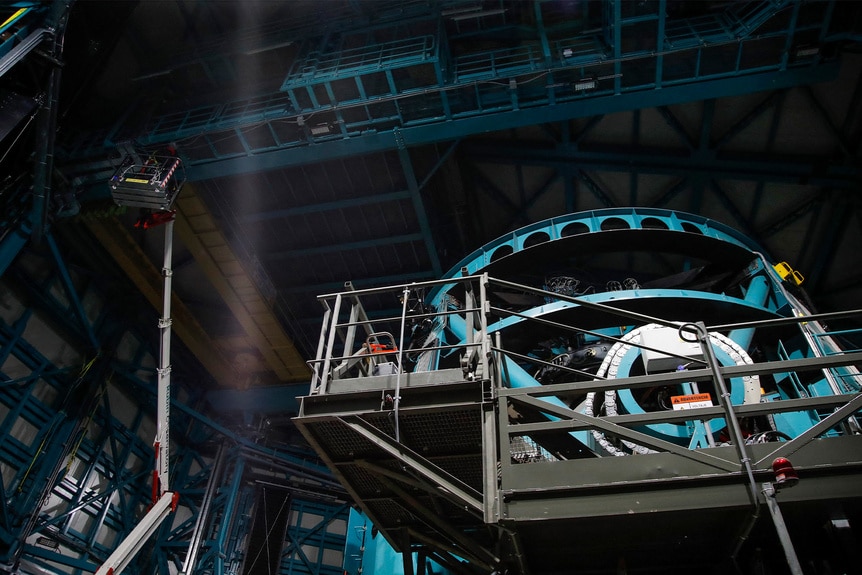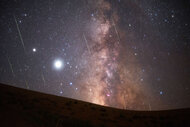Create a free profile to get unlimited access to exclusive videos, sweepstakes, and more!
How the Vera Rubin Observatory Will Hunt Down Black Holes
One night at a time.
Leigh Whannell’s 2020 reimagining of The Invisible Man presents a world in which optical technology can render visible objects, including people, totally invisible. Inventor Adrian Griffin (Oliver Jackson-Cohen) uses that technology to shroud himself and enact a campaign of terror against the woman he allegedly loves. Griffin’s only error is in underestimating Cecilia Kass (Elizabeth Moss), a truly badass woman capable of dragging the invisible out into the light of day.
Carrying on that legacy (or, perhaps more accurately, defining it in the first place) is the late Vera Rubin, the coolest astronomer you’ve probably never heard of. In the course of her career, Rubin studied the rotation rates of galaxies and helped to establish evidence for the existence of dark matter. Now, a new observatory is being built in her name, and it could help to identify even more hidden parts of the cosmos, including binary pairs of black holes.
For More on the Universe:
What Does Dark Matter Look Like? The Euclid Telescope Could Reveal It Soon
Scientists are Developing a Real-Life “Freeze Ray” to Keep Spacecrafts Cool
Earth Has Had a Second Moon (Sort Of) for the Last Few Thousand Years
The Underappreciated Legacy of Vera Rubin
Rubin earned an undergraduate degree from Vassar College, where she was the sole member of the astronomy class. After that, she moved to Cornell and Georgetown for graduate studies before taking various research and teaching positions. She taught mathematics at Montgomery College, and worked as a research associate and astronomy professor.
She was the first female astronomer ever to observe at the famous Palomar Observatory, in 1965. Pulling that off required building her own bathroom, as the observatory didn’t have bathroom facilities for women. In the course of her work, Rubin identified a discrepancy between the predicted angular momentum of galaxies – based on mass estimates determined from visible light – and the observed angular momentum. Her calculations determined that there must be 5 to 10 times as much dark as ordinary matter inside galaxies.
Meanwhile, she also found some of the earliest evidence for galaxy mergers, by finding matter rotating in the opposite direction as the rest of its parent galaxy. Her dark matter and galaxy merger predictions have been confirmed in the decades since, cementing her legacy as a pioneer of modern astronomy. In 2019, the Large Synoptic Survey Telescope being built in Chile was renamed the Vera Rubin Observatory (VRO), in honor of Rubin’s contributions to astronomy.
How the Vera Rubin Observatory (VRO) Will Hunt Down Black Holes
Just about every large galaxy has a supermassive black hole (SMBH) at its center. When galaxies merge together (as Rubin said they must) those black holes create binaries and eventually merge. Once fully built and in operation, the VRO should be able to find those black hole binaries before they merge, giving astronomers a heads up about potential mergers and the associated gravitational wave events in the future.
Construction of the observatory began in April 2015 and first light for the engineering camera is expected in August 2024. Full survey operations are planned to begin a year later, in August 2025. The observatory’s primary mission is the Legacy Survey of Space and Time, which will capture and compare images of the night sky using an 8.4-meter mirror.
By comparing images night after night, astronomers can find moving objects from asteroids to supernovae and maybe even black hole binaries. The telescope will observe from its mountaintop position at Cerro Pachón in Chile once every three nights, and it is expected to return 20 terabytes of astronomical data for every night of observation. Unlike most telescopes, which select a target and point at it, the VRO will be able to help identify those targets by taking wide-ranging images of the whole sky.
Close to home, those images could identify asteroids, comets, and other wanderers in our own solar system. But the really fancy stuff is hiding farther out, where black holes and dark matter dominate, and the Vera Rubin Observatory is our ticket to the cosmic show.
While we’re waiting for the VRO to wrap up construction, check out The Invisible Man, from Universal Pictures.



















